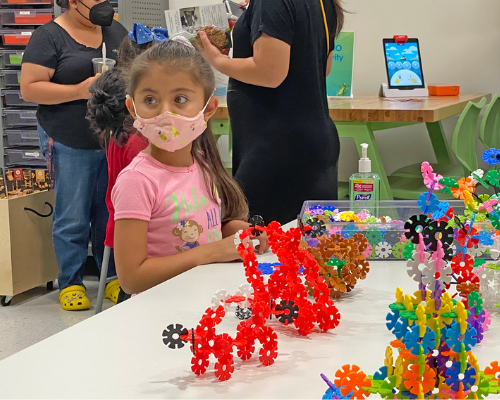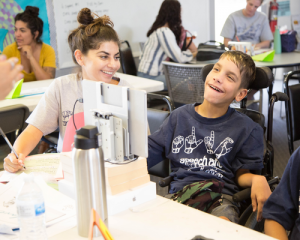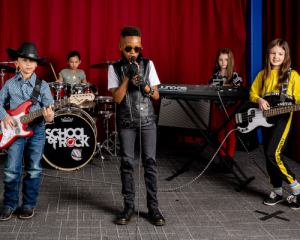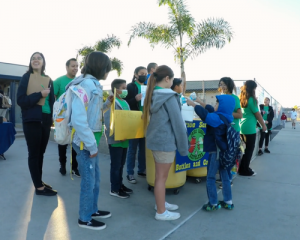OC superintendents look back, look ahead at 2021-2022 school year.
Putting the weirdest school year in the nation’s history behind them, Orange County’s 2021/2022 school year remains a work-in-progress for staff, students and parents. At nearly the halfway point, things aren’t yet back to normal, and there are still unknowns ahead, but it seems a giant step from this time last year.
Of course, it might also be a matter of re-defining “normal.”
“It is difficult to quantify how close to normal we are,” says Orange County Superintendent of Schools Al Mijares. “Certainly it is not business as usual on school campuses.”
Campuses, Mijares acknowledges, are sitting squarely in an intersection of various and sometimes conflicting community needs during the pandemic, but complex and multiplying demands are being met nevertheless.
“Our schools faced tremendous challenges to start the school year,” Mijares says. “In addition to assessing and addressing individual learning needs and supporting mental health, school leaders were responsible for tracking and reporting new COVID-19 cases and conducting contact tracing on campuses that were now full, having resumed instruction five days a week.
“I can’t overstate the respect and admiration I have for those who have taken on that Herculean task,” he says.
He also pointed to the “vigilance” across the districts over continued universal mask-wearing indoors and requiring all staff to be either fully vaccinated or tested weekly as a key element of success.
“At the same time, we can’t lose sight of how far we’ve come. We have successfully transitioned back to full in-person instruction, and our students are once again participating in clubs, science labs, music, sports, theater and art. These aspects of public education that once seemed so routine are an incredibly welcome sight,” Mijares says.
And he’s not alone in savoring some small, but significant victories.
“The fact that we have 45,000 students back in classrooms means we have returned to some sense of normalcy,” says Santa Ana Unified School District Superintendent Jerry Almendarez. “In a community where so many parents are essential workers, schools provide vital services for families.
“We returned to in-person instruction in August after 15 months of remote learning. There was a lot of excitement among our students, staff and parents,” Almendarez says. “But there was an equal amount of anxiousness.
“Even though we prepared for months for the reopening of schools, there was so much uncertainty with how our students would deal with masking, social distancing and other safety protocols. We soon found out that our students adapted well to these new rules.”
Capistrano Unified School District Superintendent Kirsten Vital Brulte says the key to her district’s success was the experience they gained from 2020.
“I’m proud to say that CUSD was one of the first districts, and one of the largest districts in the state, to open in September 2020,” she says. “In the spring of 2020, our students accounted for 25 percent of all students in school in the state of California. We kept our students and staff safe and our early work to open schools prepared us and allowed us to really perfect our protocols and procedures when it came to following state and county health guidelines.”
Brulte says when this new school year arrived, “our teachers, classified staff and administrators were excited to open the doors and see young people face-to-face. We’ve had a great school year.”
Keeping Up with Needs
But the other part of school success has been investment.
“We have added 300 additional teachers, speech pathologists, psychologists, counselors and classified staff. In elementary classrooms, we reduced class sizes and hired credentialed elementary PE teachers, providing our extraordinary classroom teachers additional time to review student data and plan necessary interventions,” Brulte says. “We were also able to hire para-educators to [also] support combination classes, and transitional kindergarten and our Elementary Multi-Tiered System of Support Specialists support student intervention and enrichment.
“In our secondary schools, we added additional sections for intervention and increased funding for professional development for our teachers in the subjects of math, English language arts, and English language development. To support all families, we purchased 35,000 new Chromebooks to ensure every student in pre-kindergarten through grade 12 has a device,” Brulte says.
Santa Ana Unified School District took a similar approach.
“We determined that our focus for the first part of this new school year would be supporting social-emotional needs of children who have been away from the classroom for so long,” Almendarez says. “We hired extra teachers, counselors, school psychologists and others to lower student-to-staff ratios and help us achieve this goal.”
Meanwhile, COVID protocols have remained in place and are working.
“Following state mandates, we continue to require masks for students and staff during all indoor activities,” says Almendarez. “We also continue to encourage that anyone who is eligible and has not done so already get vaccinated. We are working with community partners to host vaccination clinics at many of our schools across the district.
“We follow all state and county guidelines, so we are operating as normally as possible given the restrictions. As far as masks and vaccinations, again, we follow the California Department of Public Health and the Orange County Health Care Agency guidelines.”
Brulte confirms Capo’s adherence to state and county guidelines as well, with masks required indoors by staff and students at all times unless eating or drinking. “We have been very consistent with this approach since the beginning of the pandemic,” she says, “so we are operating as normally as possible given the restrictions.”
Mijares says he’s “encouraged by the relatively low COVID transmission rates … but we are acutely aware of surges in other states and countries, along with the presence of the newer Omicron variant, which carries a number of unknown factors. Obviously we will have to see how that plays out.”
Related Posts:
- Stratford School Unveils Its Plan for Fall 2021, Education
- Reader’s Choice Awards 2021: Education Winners
- OC Superintendents Views of 2021-2022 School Year, Education
Focus on Mental Health
But already in place is a system designed to deal with mental health concerns for students — the state’s Multi-Tiered System of Support. Mijares is confident about its ability to be adapted to the current emotional landscape in Orange County schools.
“MTSS predates the pandemic but feels like it was made for this moment,” he says. “It can be thought of as a school-wide commitment to a set of proven strategies that address academic, behavioral and social-emotional needs.
“Since 2016, OCDE has led the statewide implementation of [the system] based on the maxim ‘All Means All.’ It’s become our flagship framework for the simple reason that it’s effective in all educational applications, including programs that boost literacy.”
Despite MTSS, Almendarez is reminded of the day-to-day needs.
“We have found that there is more of a need for social-emotional support for students than in previous years. We understand that for students, especially the younger ones, there is a period of adjustment needed after being away from their teachers and classmates for such a long time. When there are behavioral issues, we have to work to understand the root of these causes and how they are related to issues created by the pandemic,” he says.
With the other half of the school year still ahead, district leaders remain cautiously optimistic.
“Right now, we are hopeful our vaccination rates will continue to improve across all eligible populations,” Almendarez says. “This will help our region and state ease some of these ongoing masking and other mandates. It’s still too early to predict how the Omicron or subsequent variants will impact our schools. But we will continue to follow all guidelines.”
Brulte says, “We need to be mindful of how these last almost two years has deeply affected everyone. We’ve learned during the pandemic to focus on one day at a time and that we will adjust our operation as necessary — keeping our focus on serving our 43,000 students and their families. We will continue to ask each other for grace, patience and compassion as things constantly change.”
By Shawn Price












Leave a Reply